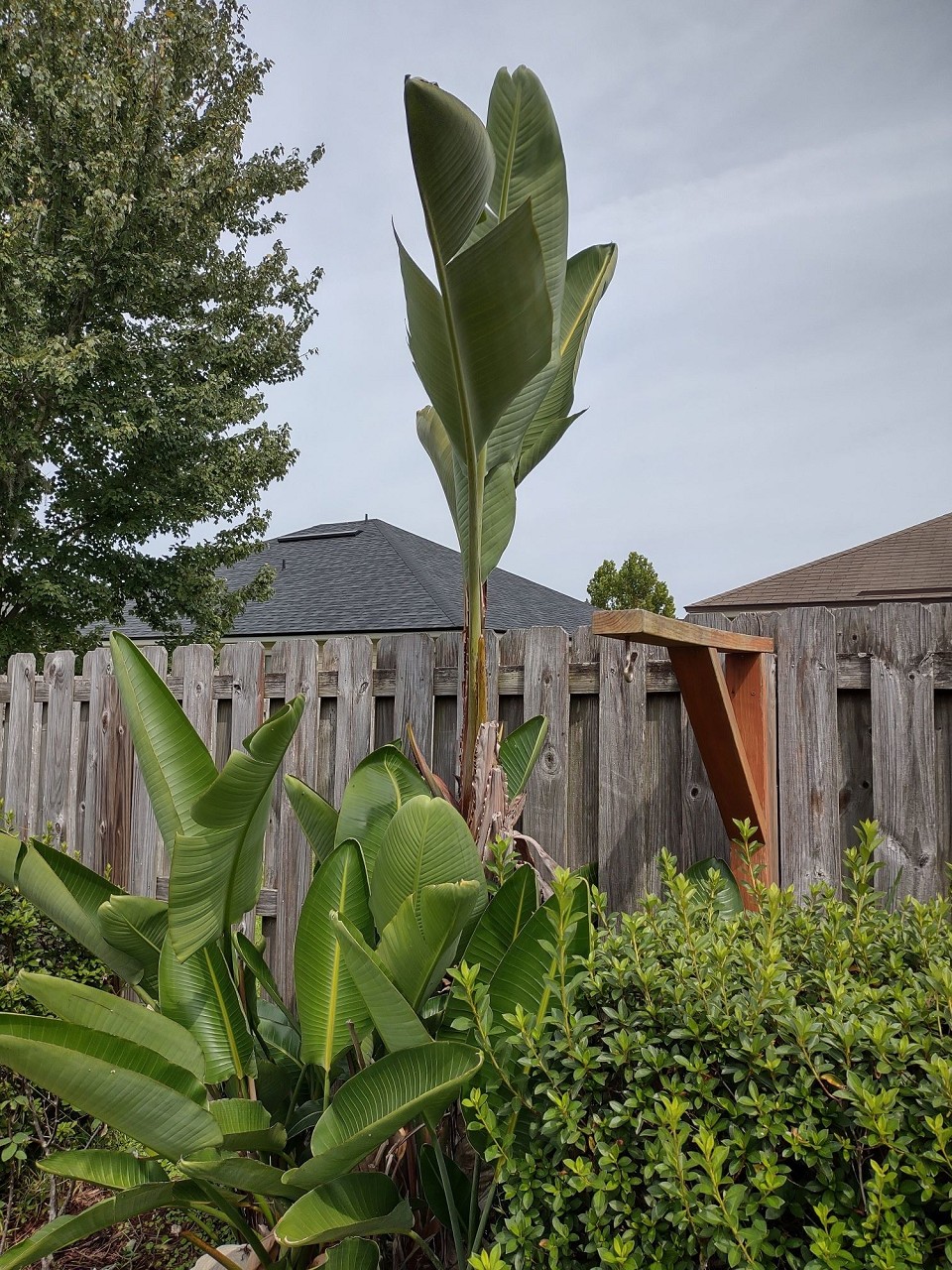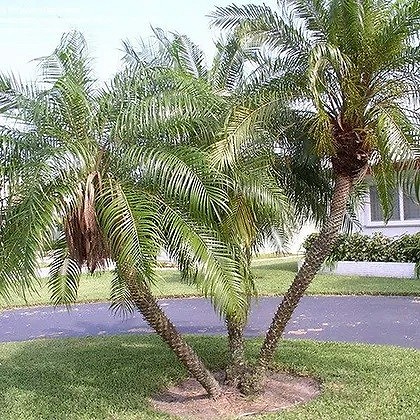Tiki Central / General Tiki
Tropical Gardens with Hardy Plants
|
P
Polly_Nesia
Posted
posted
on
Fri, Jun 10, 2016 7:01 PM
Not sure how much to post that would be helpful but I'll throw out another website, this from a SoCal grower, who I spent a lot of time on their website early on. Great photos and articles. The owner is a former president of the Palm Society of Southern California. Do check out the pictorial presentation on lush and tropical plants on the site for ideas on how to bring color into your landscaping. And of course don't forget planning for your tiki and garden satutes amid your plants. LED low-voltage lighting is available in many price ranges to accent your pieces. http://www.junglemusic.net/?fullweb=1 With southern California having mountains, ocean and inland areas, numerous growing regions are represented, and one can find relevant palm selections at these southern nurseries even for those of us living further north in colder zones. The palms in our landscaping, including the Mule palms pictured above, all came from a palm nursery in the SF South Bay area: http://www.alltropicalpalms.com ; but you'll find palm nurseries in both northern and southern California and they'll be able to help you with what grows best in your particular area. The temps in my area have run from 113F tops one year to 25F a few years back. Wanting low maintenance, we planted palms for our Zone (pinnate and fan for variety) but added less cold tolerant birds of paradise and SunPatiens, for a tropical feel for example, that need frost cover protection when we get to a certain point. A pain, but so worth seeing flowering plants once the temps warm up. Some gardeners like to push zones and can be successful but it will be more work and you can plan your landscaping with overhead canopy to help in that regard. For newbies I'd recommend you learn your USDA zone and your Sunset Magazine zone to aid in selecting appropriate plants. Sunset Magazine zones are more area specific taking into account rainfall, elevation, ocean influence, etc. Your specific temps/frost likelihood will also be influenced by elements like canopy, structures and elevation dips. Walls will help retain heat, terrain dips will channel cold air to the lowest spots. BTW many palms can handle a more clay environment so don't let that deter you from looking. [ Edited by: Polly_Nesia 2016-06-10 19:05 ] [ Edited by: Polly_Nesia 2016-06-10 20:34 ] |
|
P
Polly_Nesia
Posted
posted
on
Sat, Jun 11, 2016 12:20 AM
Spike, since you're coastal socal and don't want a lot of palm height take a look at the areca palm for near your pond area. |
|
H
headpaneer
Posted
posted
on
Tue, Jun 14, 2016 11:54 AM
More great info. Thanks! |
|
A
AkronTiki
Posted
posted
on
Thu, Jun 16, 2016 5:51 AM
Always very interested in this subject; our spot in Ohio is 6b now – apparently they adjusted the zones about 4 years ago due to sustained warming. We just used arborvitae as a natural fence for our pool area (not tropical, but it is green) and the rest is surrounded by loads of daylilies, hostas and an assortment of tropical-looking potted plants (palm, fern, canna, coleus) that I have scattered around. With the Japanese maples and Chinese dogwoods (which seem to hold spring blooms forever) the effect is pretty good. I also bring out 6 large potted hibiscus that I keep alive in the basement every winter – I just water them and leave a full light spectrum bulb on 24/7 down there. After I cut them back, they drop about 90 percent of their leaves, but often still bloom. Once I put them back out on the pool deck after the last frost, they snap back and usually look pretty good in about 3-1/2 weeks; I’ve had them for about 6 years now. If I could add a couple hardy tropical perennials that would survive the winter I might. Have considered hardy bamboo in the past – but really have no place to put it now, and its potential invasiveness scares me, anyway. |
|
J
JackLord
Posted
posted
on
Thu, Jun 16, 2016 12:46 PM
I had the same concern regarding bamboo after having to destroy a tract of it at my parents' house. I planted some miniature, variegated bamboo at my home- cannot recall the name. To control it, I first planted it in a metal wash bin. Then I placed the wash bin in a wood half barrel that went into the ground, but with the top just above ground level. That has contained it thus far by I watch it like a hawk. |
|
P
Polly_Nesia
Posted
posted
on
Thu, Jun 16, 2016 3:47 PM
We planted Bambusa textilis var. gracilis bamboo in 08/2013 for a privacy hedge in a section of our yard. It's a clumping bamboo, not running so the culms come up close to the original plants and can be easily removed when just shoots. We added a liner to the fence wall side of the bed before planting just for extra piece of mind but many told us it was unnecessary. After researching clumping bamboo for our area, I liked this variety for it's upright nature, thinner culms (easier to cut when mature), and estimated height of 20 feet in our area. I'd say some of the older grouping of culms are about that now. The nursery's website said it's lowest temp was 5F, so definitely hardy for our area. Other than some pruning of errant culms on occasion and feeding during the spring to fall season, it's pretty maintenance free. We're not quite there yet with full privacy screening from the 2-story house behind us, but getting there. Here's some photos. Last photo was 01/2016.
The planting area here is only 5 feet from fence to fireplace (less when you consider the stepping stones) and one of the reasons I selected a narrow culm bamboo. As you can tell we have this on a drip with the rest of our landscaping. Mulch helps hold the moisture in the ground during our hot summer/fall days. Seems to tolerate the heat pretty well and when the leaves look curled we give it some extra water with a watering can, but this hasn't been a water hog at all. |
|
P
Polly_Nesia
Posted
posted
on
Thu, Jun 16, 2016 4:43 PM
This was a photo from 12/2015. It's grown and filled out quite a bit more since the weather has gotten warmer. Some fertilizer helps green it up and encourages growth. Love that it is evergreen and always provides privacy. Our fence btw is around 5 feet so you can judge the height. I will mention that you can top bamboo and it won't grow any taller if you prefer a hedge- rather than natural-look.
Some close ups of the culm/leaf structure. The mature culms for this variety should be around 1-1/4 inches.
This is the north SFBay nursery we bought our bamboo from: http://westcountybamboo.com . If you click on the" Bamboo" tab it will take you to the species/varieties they carry. More importantly it will give you info on whether it's a clumped or runner, height, cane dia., lowest temp, lighting requirements and pricing. Very helpful if you are researching specific requirements. Another great site for bamboo research is the American Bamboo Society. They have a more extensive list of species listed for various areas of the country and what I found really great was if you found a variety you wanted to find locally, they have a "Sources" button there that will help you find it. That's how I came to find the nursery we purchased from. Here's that "Species" webpage, and do check out all the other info they make available such as care, etc: http://www.bamboo.org/BambooSourceList/BambooPlants.php?G=All&M=1&Button=FIND&U=I&S=1 . I will mention that you should be very careful to get the full name of the bamboo you decide on and ask for it because some are variations with different traits and you don't want to be surprised down the road as it matures. For example there's a difference in mature height, cane diameter and lowest temp. between Bambusa textilis, Bambusa textilis gracilis and Bambusa textilis var. gracilis. |
|
L

Luckydesigns
Posted
posted
on
Fri, Jun 17, 2016 11:06 AM
Bamboo scares me because of everything that I've heard about it getting out of control... but I would love to be able to plant it around the perimeter of my back yard fence... |
|
L

Luckydesigns
Posted
posted
on
Fri, Jun 17, 2016 11:15 AM
Poly_Nesia, I just read your post about bamboo on the other page. Looks like a good solution to my concerns. Thanks for sharing the info! Spike
[ Edited by: Luckydesigns 2016-06-17 11:16 ] |
|
A

AceExplorer
Posted
posted
on
Fri, Jun 17, 2016 12:12 PM
Folks, a couple of years ago we bought about $10,000 worth of mature (12-15' tall) bamboo from this place: They sell "clumping" and "non-clumping" varieties and have a pretty informative web site. The non-clumping stuff creeps and expands, however they said it can be fairly easily controlled by breaking off the new shoots when they pop up. Otherwise just buy the clumping variety which handles the weather in your area. There are some good reasons to buy the creeping/non-clumping -- the colors and shapes of the bamboo is diverse, and if you fall in love with a certain type of bamboo, you may choose to buy non-clumping and just keep an eye on it. Have fun -- it's great stuff if it can tolerate your weather. |
|
P
Polly_Nesia
Posted
posted
on
Fri, Jun 17, 2016 1:43 PM
Our HOA will not OK running bamboo but was OK with the clumping variety. Running rhizomes travel farther from the plant than clumping variety. For people with small yard space and timid about considering bamboo in general, I'd recommend looking solely at the clumping variety. In either case you want to keep an eye out during growing season especially for new shoots emerging and decide if they are keepers or not. Easier to remove at the shoot stage than as a "bamboo pole". And you will want to thin out your clumping stand as time goes to keep it healthy. Took this photo to show some of the new shoots emerging on ours. We'll go in this weekend and snap off the ones that are on the other side of our irrigation. You can also cut through the rhizome with a garden tool to kill off unwanted growth direction and dig out that unwanted portion. For maintenance think of the clumping in terms of canna growth, although our Canna intrigue spread much faster than our B. Textilis v gracilis does.
BTW each year will see the diameter of the emerging culms increase to the point of maximum diameter. What you see coming up will be the diameter of that culm for the life of it. Similar pattern for the height. Bamboo is pretty slow the first two years in ground. Very cool plant and some gorgeous culm colors as mentioned on the larger bamboo, cool looking shaped culms as well. Finding something "tropical" looking, evergreen, fairly fast growing for privacy, and relatively low maintenance gets to be a challenge especially for zones 9 and lower. [ Edited by: Polly_Nesia 2016-06-17 14:36 ] |
|
P
Polly_Nesia
Posted
posted
on
Fri, Jun 17, 2016 3:19 PM
I'll share one other site I found invaluable in getting educated in bamboo, Bamboo Garden. Good info on planting and care, including photos of cold hardy bamboo varieties. The photos of the rhizome structure was very helpful in understanding how both running and clumping propagate ( http://www.bamboogarden.com/Hardy%20clumping.htm#Clumping%20rhizome ). This is our first home with space for planting anything (more or less Mediterranean in the front and saved tropical for our backyard) and neither one of us has a green thumb so I did quite a bit of research. Glad to hear that the shared links and photos are helpful. We're pretty much planted out and have had a few years to see how things grow and now looking for additional tiki and landscape lighting to add to the beds. |
|
T
TikiPhil
Posted
posted
on
Tue, Jun 21, 2016 12:48 PM
Here's a good place to start your "researching": http://www.landdesignpublishing.com/docs/LPCG%20Sections%201-3.pdf Check out pages 52-53, 72-73, 92, and 116-125 |
|
PP

Prikli Pear
Posted
posted
on
Fri, Mar 10, 2017 11:49 AM
Not sure how useful this will be, but if you've got a Tractor Supply Company location near you, it might be worth checking out. Last year I picked up several tropical hibiscus. I thought since I'm Zone 8b I might be able to nurse them through the winter. No dice. They were completely dead before Christmas. I'd originally intended to get Rose of Sharon (Hibiscus syriacus), but for some bizarre reason they're not commonly carried by nurseries around here, and those that do carry them charge an arm and a leg--far more than for tropical hibiscus. Well, today I stopped in at Tractor Supply Co. because they often have interesting things there, and I was surprised to find a display with a bunch of Rose of Sharon plant from DeGroot. These are small, mind you, 6" stems with about 8" of bagged roots, but for the list price of $6.99 I thought it too good a deal to pass up. At check-out, though, I found out they were 50% off. I ended up getting an Austin Dewberry as well--total spent, $6.35. I still hope to pick up some hardy hibiscus that sport more garish, tropical-looking flowers, but the Rose of Sharon makes for a attractive, low-maintenance semi-tropical addition to the landscape. |
|
T

TIKIGIKI
Posted
posted
on
Mon, Jan 23, 2023 10:27 PM
Sorry if this one has been mentioned before in this thread, (I'm still a newbie), but if you live in a colder climate and want a "tropical" look for the garden then Strelitzia nicolai is your best friend. This is a giant cousin to the ever popular "Bird of Paradise" Strelitzia reginae, and has those wonderfully tropical looking banana-like leaves but it's WAY tougher than any banana. It will tolerate frost for a start. It clumps naturally and can be divided or left to create a thicket. It grows to maybe 15/20 feet eventually and can look a little untidy if not "groomed". The flowers are large white and blue "birds"! Potted size:
[ Edited by TIKIGIKI on 2023-01-23 22:28:48 ] |
|
J

joefla70
Posted
posted
on
Wed, Feb 1, 2023 2:51 PM
I have them in my back yard. They get really big. Mine are well over 30 feet tall. |
|
T

TIKIGIKI
Posted
posted
on
Wed, Feb 1, 2023 8:01 PM
Yes they certainly will in warmer climates like Florida, but I expect they would grow more slowly if subjected to winter away from the coastal regions. The do give a very tropical effect and are far more hardy and permanent than bananas. Speaking of growing large, I am currently cultivating one of THESE:
[ Edited by TIKIGIKI on 2023-02-01 23:26:00 ] |
|
M
MadDogMike
Posted
posted
on
Thu, Feb 2, 2023 8:29 AM
in reply to TIKIGIKI
TIKIGIKI what is that big fan thing called? I remember seeing those all over Oahu. They are cool but only look good from the sides. My luck I would plant one and it would "fan" the wrong direction LOL Reminds me of the Triangle palm too |
|
T

TIKIGIKI
Posted
posted
on
Thu, Feb 2, 2023 2:17 PM
in reply to MadDogMike
The triangle palm you mention is a really ugly plant when it gets big in my opinion. (Dypsis decaryi) The plant you ask about is commonly called a Travellers Palm, (it's NOT really a palm at all) because you are supposed to be able to drink the water that collects at the bottom of each leaf, ....but I seriously would not recommend doing that unless really dying of thirst! Proper name Ravenala madagascariensis. They prefer to fan out in an east/west line and if planted otherwise MAY over time SLOWLY re-orientate. The wind does tatter the leaves but the plants don't seem to mind. Definitely worth seeking out, Traveller's Palms do make a spectacular feature and even mine gets a lot of comment. Not sure how they would handle serious winter though. Occasional frost would be OK I think.
Here's a young one very like what I have now. (I bought an advanced specimen).
[ Edited by TIKIGIKI on 2023-02-02 14:27:51 ] |
|
M
MrBaliHai
Posted
posted
on
Thu, Feb 2, 2023 6:00 PM
in reply to TIKIGIKI
Saw quite a few of these the last time I was in Kuala Lumpur. I live in Wisconsin (Zone 4/5), so the only way to grow them would be inside a very large tropical greenhouse.
|
|
PP

Prikli Pear
Posted
posted
on
Thu, Feb 2, 2023 6:47 PM
The Bird of Paradise family has some interesting members. As a point of reference, I planted a standard Bird of Paradise in the ground maybe five years ago. I'm in Zone 8B with heavy clay soil. I covered the plant with a frost cloth during our (relatively) mild winters. It survived, but never flowered. Whether this was because of the winter, the clay soil or our summer droughts, I do not know. Two years ago I dug up and split the root ball and planted half in a large pot. It absolutely flourished, quadrupling in size during a single summer--more growth than the parent plant had managed in all previous years combined. So this year I dug up the rest of it and gave it its own pot. I'd absolutely love to have a giant and a traveler's, but damned if I could manage pots big enough! |
|
T

TIKIGIKI
Posted
posted
on
Thu, Feb 2, 2023 7:54 PM
The strelitzia you mention may have been potbound when you got it. They have very fleshy roots and if they have gone round and round in a small pot it will not thrive even if planted in the open soil. Dividing it was the best thing to do and it responded accordingly. The plants come from Africa and will tolerate frost and droughts once established. Back as a teen in a rural area I ordered and grew one in a very cold winter area with lots of frosts. (No snow.) It flowered well in the hot summer and was a real novelty then. No one had seen them before. |
|
M
MadDogMike
Posted
posted
on
Thu, Feb 2, 2023 9:04 PM
Prikli Pear I live in Zone 9b, my Bird of Paradise blooms CONTINUOSLY! Because I put silk flowers on it LOL I do that on many of my plants. I grow leaves well but have only had one real flower in several years. So I pick up a couple new silk flowers at Michael's (40% off coupon) every year and throw out the old ones. TIKIGIKI I have only seen one of the Triangle Palm and it was from a distance. It looked cool but I can see they would get rough as they get bigger. Makes sense that the Traveller Palm would orient east and west for maximum sun exposure (from the south for me, from the north for you). And an east-west orientation would be great in my back yard. We get into the upper 20s F (-2C) for a couple nights every few years so it might do OK. But we get LOTS of wind, it would probably be shredded all the time. [ Edited by MadDogMike on 2023-02-02 21:05:00 ] [ Edited by MadDogMike on 2023-02-02 21:05:39 ] |
|
PP

Prikli Pear
Posted
posted
on
Thu, Feb 2, 2023 9:27 PM
in reply to TIKIGIKI
Tikigiki, no, this one was of modest size when I got it and I know about spreading the roots. I think my heavy, alkaline soil was the main culprit. They took damage every winter but regrew in the spring but didn't flourish. The potted plants have a lighter soil with generous amounts of sphagnum moss. They absolutely love it. |
|
PP

Prikli Pear
Posted
posted
on
Thu, Feb 2, 2023 9:30 PM
in reply to MadDogMike
I was tempted by a small triangle palm at an Austin nursery a couple years back. I held off because I wasn't familiar with it. Good thing, too. It's definitely iffy in my climate. We lost so many canary island date palms and Mexican fan palms in recent years that it's taught me to stick with those known to be survivors. Sabal and pindo and Meds and windmills it is! |
|
T

TIKIGIKI
Posted
posted
on
Thu, Feb 2, 2023 10:12 PM
in reply to MadDogMike
My garden situation is certainly windy, and the leaves do get torn, but just like bananas, they tear along little preset lines in the leaves so I think it must be quite natural. I suspect a traveller's palm would do quite well where you are. Have a go anyway! Gardeners are always trying to grow plants from other climatic zones. I am very surprised that you have had no flowers on your strelitzia though. Well apart from your fake cheats! Here's my fakes, but these are in a corner of my indoor Tiki Bar.
Real ones will take those low temps easily. They grow in most difficult situations in Africa. Is your soil acidic? If so a dose of garden lime will provoke a flowering. Or maybe you are feeding it too much nitrogen, which produces lots of leaves but inhibits flowering? I bought fertilizer supposedly specifically made for hibiscus and applied it liberally. The plants grew very bushy and lush but I have had NO flowers at all this summer. Very disappointing to say the least as I use them to decorate my bar! PRIKLI PEAR: It must really be cold where you are to lose Canary Island Date Palms! They are notoriously hardy, taking frost easily. Some here downtown even went totally underwater for several days in a flood, but are still thriving after the receding. Do you get snow? Triangle palms become untidy as they age and look very ordinary. I'd never recommend planting them. Have you tried Queen Palms? (Syagrus romanzoffiana) They are also called Cocos Palms and are considered a weed here but that resilience may prove a positive in difficult situations. [ Edited by TIKIGIKI on 2023-02-02 22:35:27 ] |
|
M
MadDogMike
Posted
posted
on
Fri, Feb 3, 2023 8:42 AM
Not sure why my BoP won't bloom, I'm not much of a gardener. I plant everything in big pots and put automatic drip water on it. If it dies I replace it with something else. Eventually I find something that thrives in that spot LOL The Queen Palms are nice and grow well here but they require a lot of trimming to look nice. I want to try a King palm. They are supposed to be "self trimming", the dead branches fall off by themselves. You still have to pick them up but no ladder required.
The Canary Island Palms and Mexican Fans both grow well here but have a terrible shade to maintenance ratio. All maintenance and no shade! And the Canary Island give little dried up dates. For the mess involved I'd rather have a Madjool Date |
|
T

TIKIGIKI
Posted
posted
on
Fri, Feb 3, 2023 2:33 PM
Can you get Bangalow Palms (Archontophoenix cunninghamiana) over there?
Australian native, fast growing, self cleaning and certainly very tropical looking. Tolerates cold too.
Should do well where you live.
Or you could try Majestic Palms (Ravenea rivularis). The closest looking palm you can get to a coconut palm. Very hardy, self cleaning too! I have several of these are they are doing very well. A little slow to start but then things pick up rapidly.
|
|
M
MadDogMike
Posted
posted
on
Fri, Feb 3, 2023 4:38 PM
in reply to TIKIGIKI
I like self cleaning, I'll look at those and see if they are around |
|
T

TIKIGIKI
Posted
posted
on
Fri, Feb 3, 2023 6:11 PM
FREE ADVICE....but worth a whole lot more! Do NOT, ...EVER even consider planting any Pandanus! NEVER! Those things are KILLERS! Not only is each yard-long leaf fully barbed for the entire length with lethal spines, but even the central vein of each one is the equivalent of razor wire on the back, thus ensuring that even standing anywhere within ten feet of the damn thing will draw blood....and LOTS of it! Think green rip-saws. I grew some Pandanus from seed that I had collected from a tree on nearby beach. They sprouted easily, grew very quickly, and looked great with their walking stick prop-roots. All very "tropical" indeed! I have just this moment come inside to try to staunch the profuse bleeding, apply suitable dressings, (if not sutures!), then don any mediaeval style armour I may have lying around, gather up my chainsaw and go forth to do battle with the blood-thirsty monsters! Even now I'm not at all sure whether I will emerge as the victor, .....or be admitted to Casualty! You have been warned! [ Edited by TIKIGIKI on 2023-02-05 23:23:43 ] |
|
T

TIKIGIKI
Posted
posted
on
Sat, Feb 4, 2023 5:46 PM
[ Edited by TIKIGIKI on 2023-02-18 16:02:11 ] |
|
T

TIKIGIKI
Posted
posted
on
Mon, Feb 6, 2023 9:20 PM
Here is a picture of one of my coconut palms. So what's a Tiki Garden without one of those? (I have three growing at the moment.) Now it must be said that these were planted against all the advice of the naysayers. "They'll never grow here....too cold in winter, you're wasting your money" etc. I had to order them as sprouted coconuts from Northern Australia and they are now nearly two years old, so they have already been through two winters. (Such as they are here. No snow or frost.) It certainly slowed them a bit but I think as they gain in size they will become more resilient. I feed them a proprietary palm food and every time I go to the beach I bring home a flask of seawater which they seem to enjoy. You can see coconut palms growing virtually in the edge of the ocean on the Pacific islands. This summer has seen good growth and hopefully they are now fully established.
|
|
C

coldwarspacemonkey
Posted
posted
on
Wed, Feb 8, 2023 2:23 AM
I love the idea of the Strelitzia in cooler climates, but they are susceptible to freezes. I live in North Florida, zone 9a. I've had this one for about 10 years. A freeze in early 2022 killed some of the top but it had recovered by September:
Unfortunately, 3 unusual nights of hard freeze this winter took their toll. Here it is today:
There's still some life in some of the younger shoots underneath, but I'm not optimistic that the big guy is coming back. |
|
T

TIKIGIKI
Posted
posted
on
Wed, Feb 8, 2023 1:20 PM
They certainly must have been "hard" freezes! And three in a row seems to have really damaged your plant. Gardening with any plant outside its zone is always risky, but we all tend to do it anyway. I think you plant will shoot again from the base but it will take time to regain the height you had before. |
|
M
MadDogMike
Posted
posted
on
Thu, Feb 9, 2023 10:04 AM
TIKIGIKI thanks for the advise on the Pandanus. The date palms (Phoenix dactylifera) are not very friendly either. They have very sharp spikes and they seem to have some sort of toxin. Wounds from them always swell and ache, about half the time they get infected |
|
PP

Prikli Pear
Posted
posted
on
Thu, Feb 9, 2023 1:23 PM
Normally our winters are mild. Numerous light freezes with a few hard freezes occasionally getting down to 20F (-6C). In Feb. 2021, however, we had the most bitterly cold arctic blast I've experienced in my lifetime. Temperatures got down to 9F (-13C). And stayed in that range for five days. My area of Texas can get an unusually cold snap every few years, dipping down to, say, 16F (-9C). But the temperatures don't stay that cold. We get a freeze overnight and the temperatures climb back above freezing for a few hours during the day and maybe dip back down at night. Two days later it's 65F (18C) and sunny for two more weeks. The cold killed all of the Canary Island date palms from Austin to San Antonio, as well as 75% of the Mexican fan palms in the area (which are really popular because they grow so quickly). All the Queen palms in the area survived, which makes me wonder if they're true Queen palms as those are supposed to be less hardy than Mexicans. Sabal and windmill palms shrugged off the freeze like it hadn't happened. My pindo palm survived the freeze but I almost lost it afterward to a fungal infection in the crown (which I gather is a major killer of palms after they've been weakened by cold). I lost some trunks on my Mediterranean fan palms but those have since regrown vigorously from the roots. Oh, and maybe 40% of the California fan palms in the area died as well. My young Canary Island was covered with a frost blanket. I initially thought it survived, but as we got into March and April all the color drained from the fronds and it withered. Likewise, I had two loquat trees approximately 10' (3 meters) tall. The freeze killed back all of their foliage but they flushed out new growth in early April but by June all that growth and withered and they were dead, dead, dead. Snow is quite rare around here. We've had two light snowfalls in the past 20 years. Ice storms with sleet and freezing rain are much more likely. We normally have seasonal droughts from June-September with temperatures above 100F (38C), so that contributes to the stress on the vegetation. Add to that the fact much of Texas has alkaline soil and many tropical and subtropical plants just aren't very happy with the climate. |
|
T

TIKIGIKI
Posted
posted
on
Thu, Feb 9, 2023 1:32 PM
in reply to MadDogMike
Sounds a little like the Pygmy Date palm. (Phoenix roebelenii)
It's small, (garden size) and quite decorative. Quick growing too but although the fronds appear soft and delicate, the heart contains some of the most vicious long thorns you are ever likely to encounter.
I have seen them puncture a basketball that landed in one.
|
|
T

TIKIGIKI
Posted
posted
on
Thu, Feb 9, 2023 1:46 PM
in reply to Prikli Pear
That must be SO frustrating Prikli Pear! To get things growing well and up to a good size too for a few years only to have them then wiped out by a rare weather event. I am surprised the Queen Palms survived. They are known to be hardy, (they survive frosts further inland from here) but a Polar Blast is something else. We even heard about that event here in Australia back when it happened. 2022 has been the COLDEST year here overall for decades but of course our "global warming" alarmists continue to push their preferred narrative in spite of that. |
|
M
MadDogMike
Posted
posted
on
Thu, Feb 9, 2023 3:14 PM
Prikli Pear we get an occassional cold snap into the high 20s, few couple years. Here it kills and the small and midsized Indian Laurel (ficus nitida). The big established ones get frost damage but usually survive, TIKIGIKI I have a few of the Pygmy Date (are we still allowed to use that word?). The young thorns are really sharp! |
|
T

TIKIGIKI
Posted
posted
on
Thu, Feb 9, 2023 3:38 PM
in reply to MadDogMike
Re. "Pygmy"....well I see that it's now being referred to in current plant catalogues as the "Dwarf" date palm. Ask Peter Dinklage about that? Maybe they should have just gone with "Little", but I'll stick with "pygmy". I have never understood the current snowflake hysteria over words, ....ANY words! They are just words. Yes, ALL of them! Yes Virginia, I do mean ALL of them! Not saying it, or using some long-winded prissy artificial euphemism will not somehow make it go away or suddenly excise it from the language. I've been called many of them at one time or another, and yet here I am. What ever happened to "Sticks & stones..." etc.? |

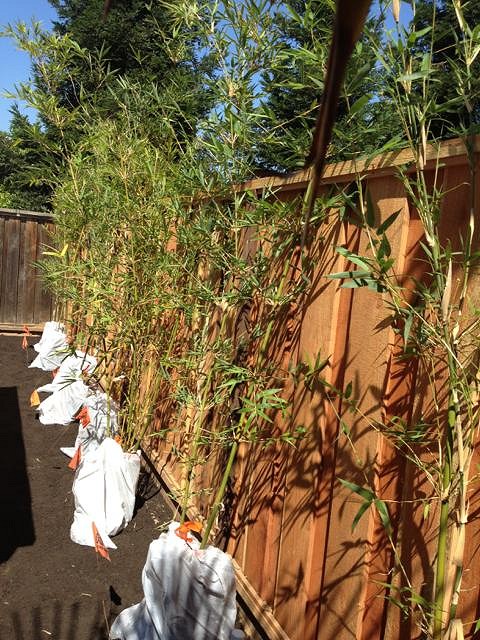
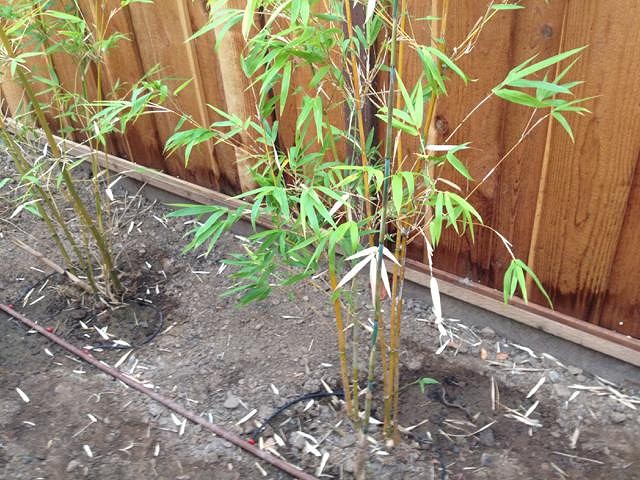


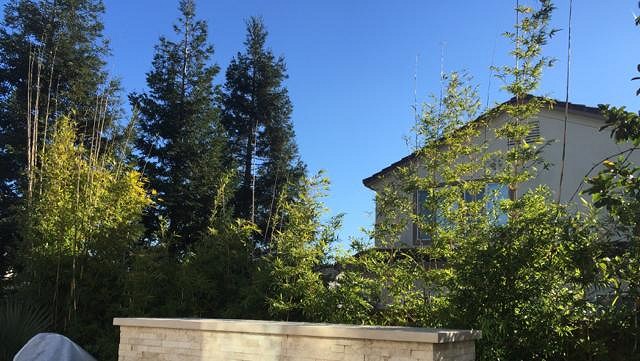
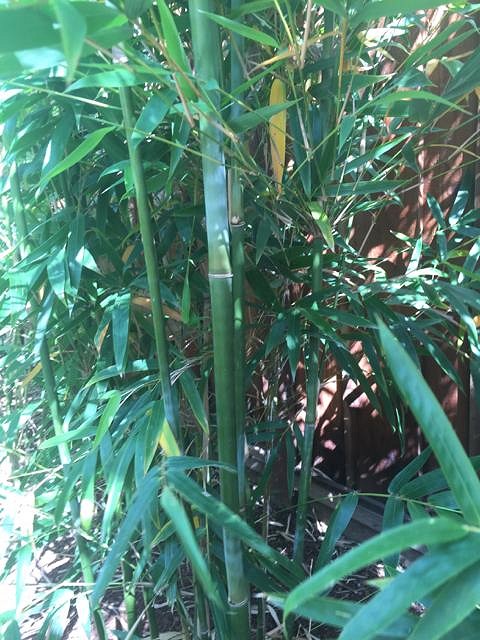
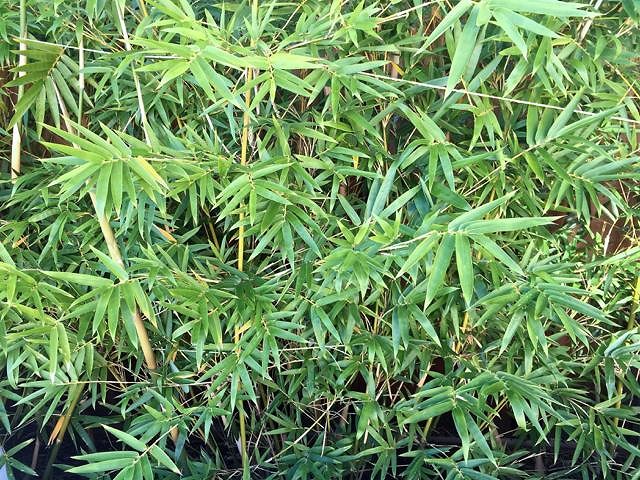

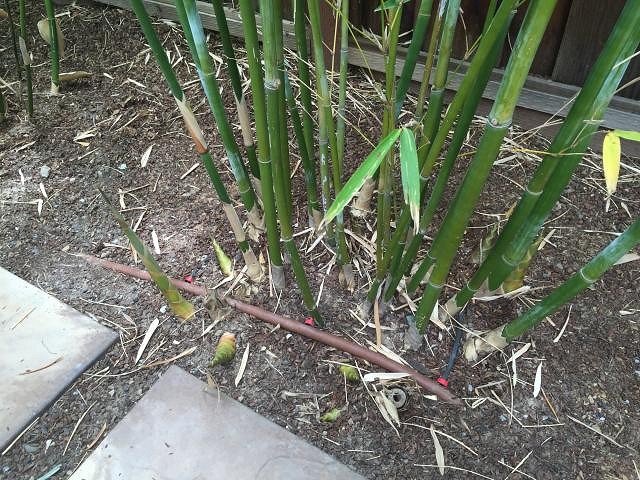
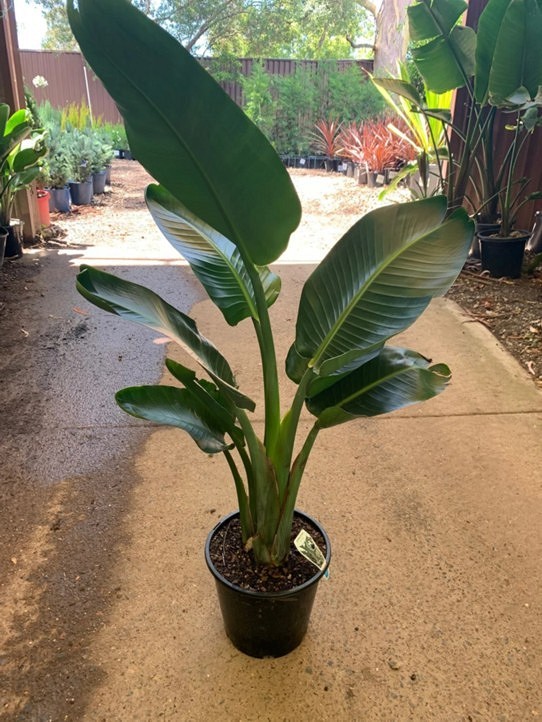 Flowers:
Flowers:
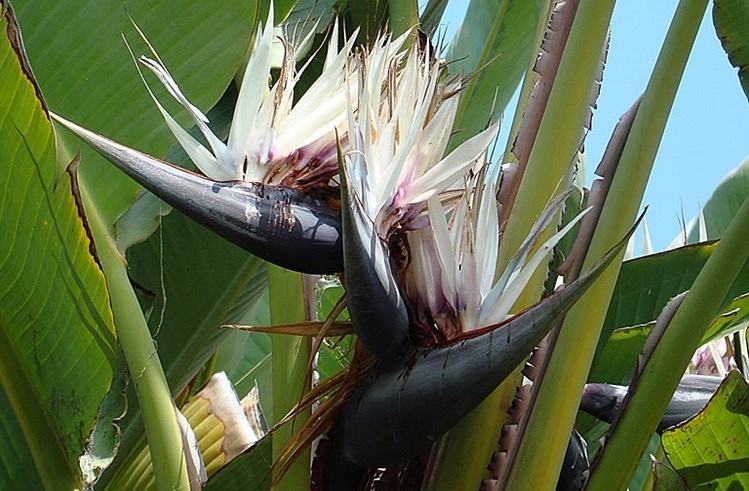 Half-grown...look at those wonderful "tiki" leaves!
Half-grown...look at those wonderful "tiki" leaves!
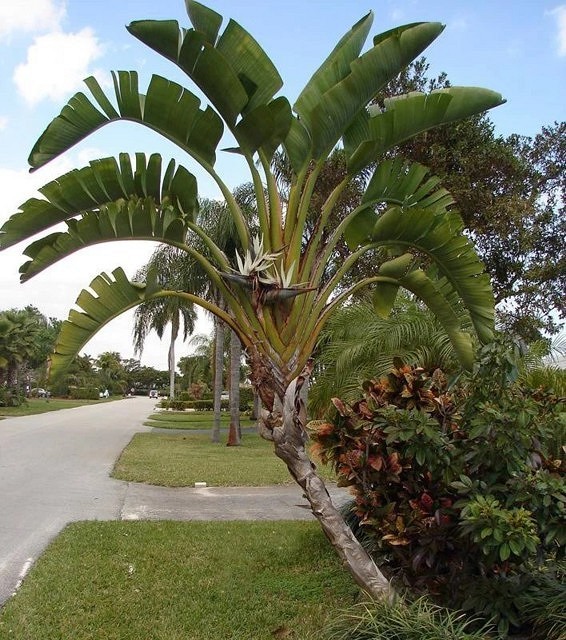
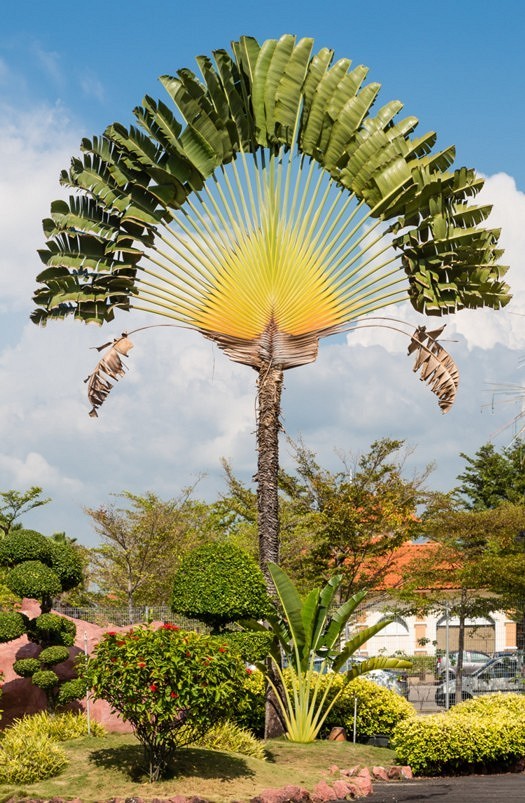
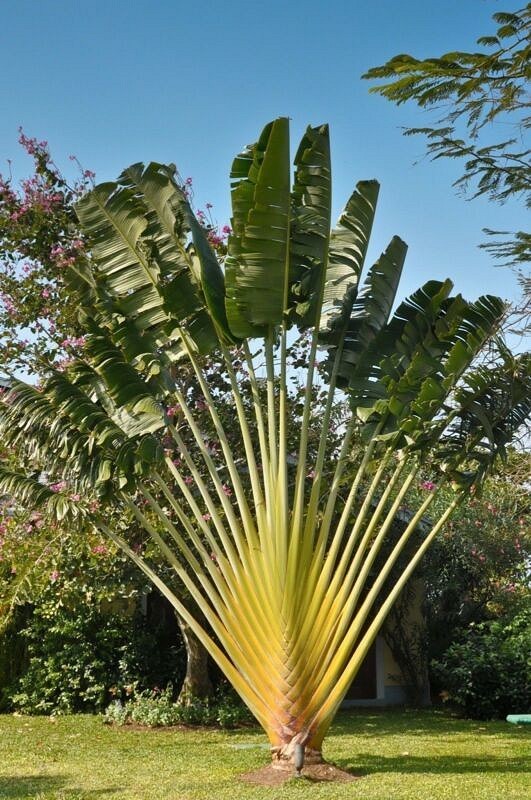 but they can look like this when older:
but they can look like this when older:
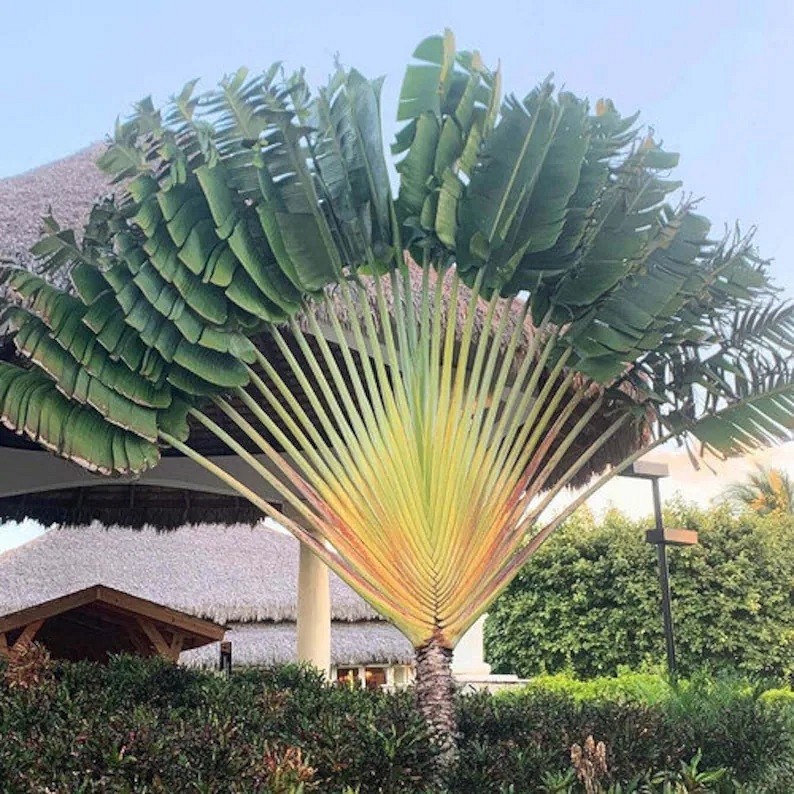
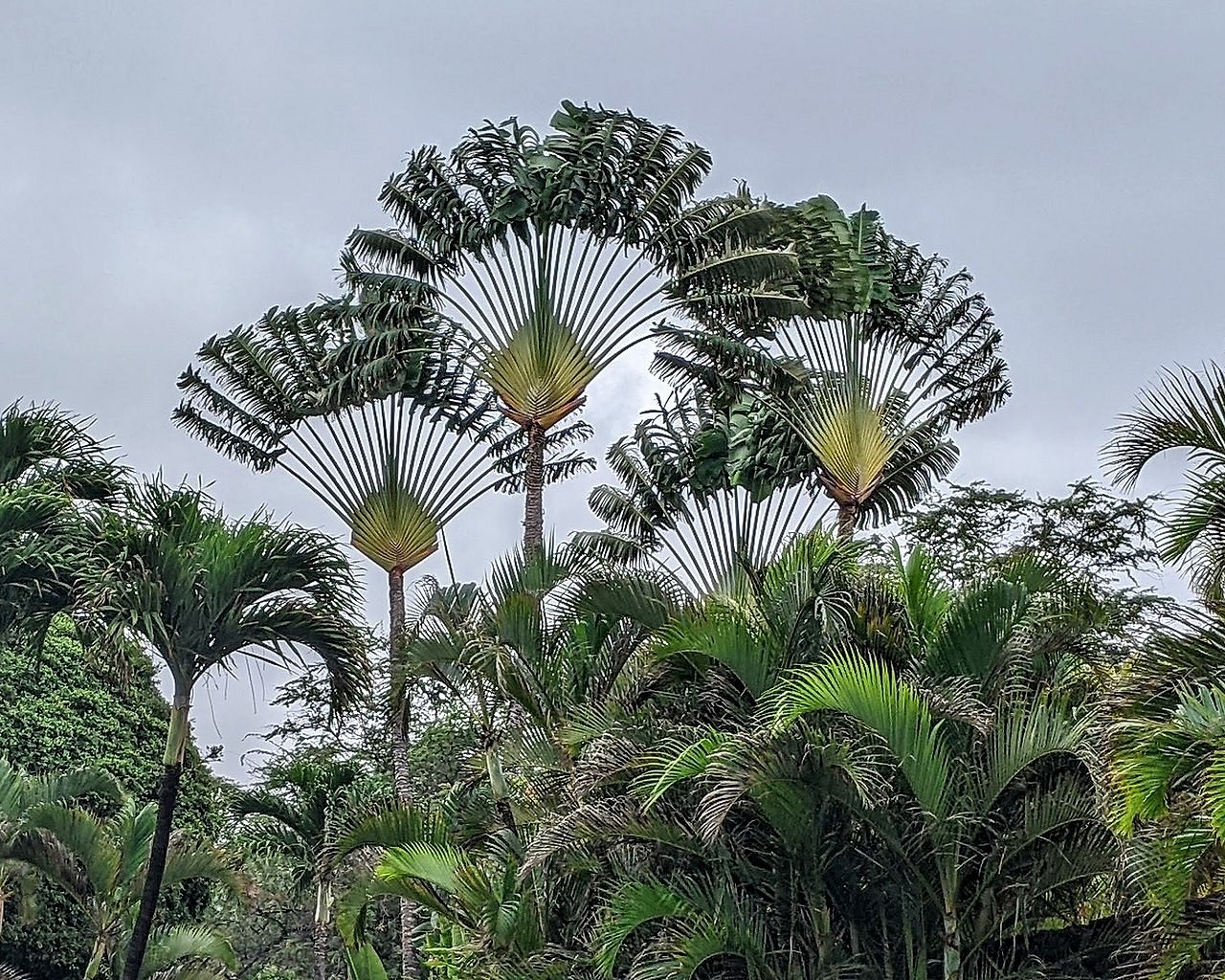
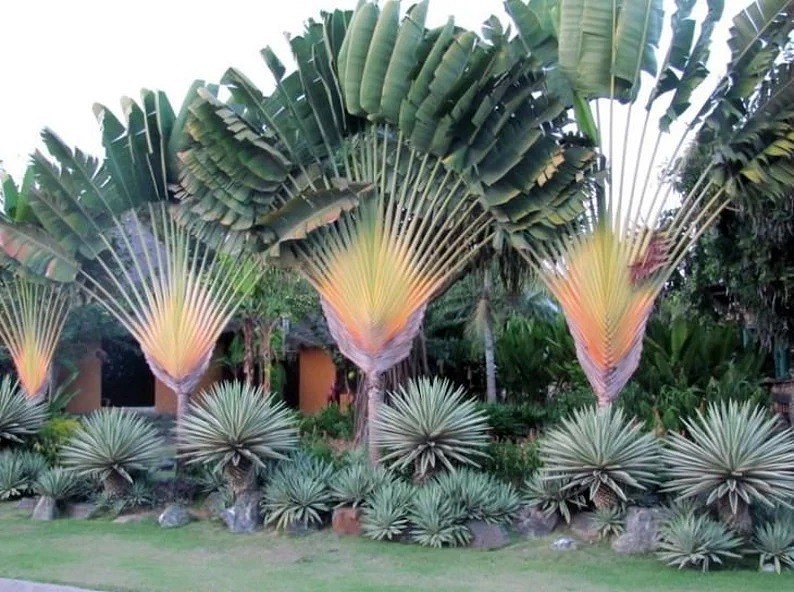
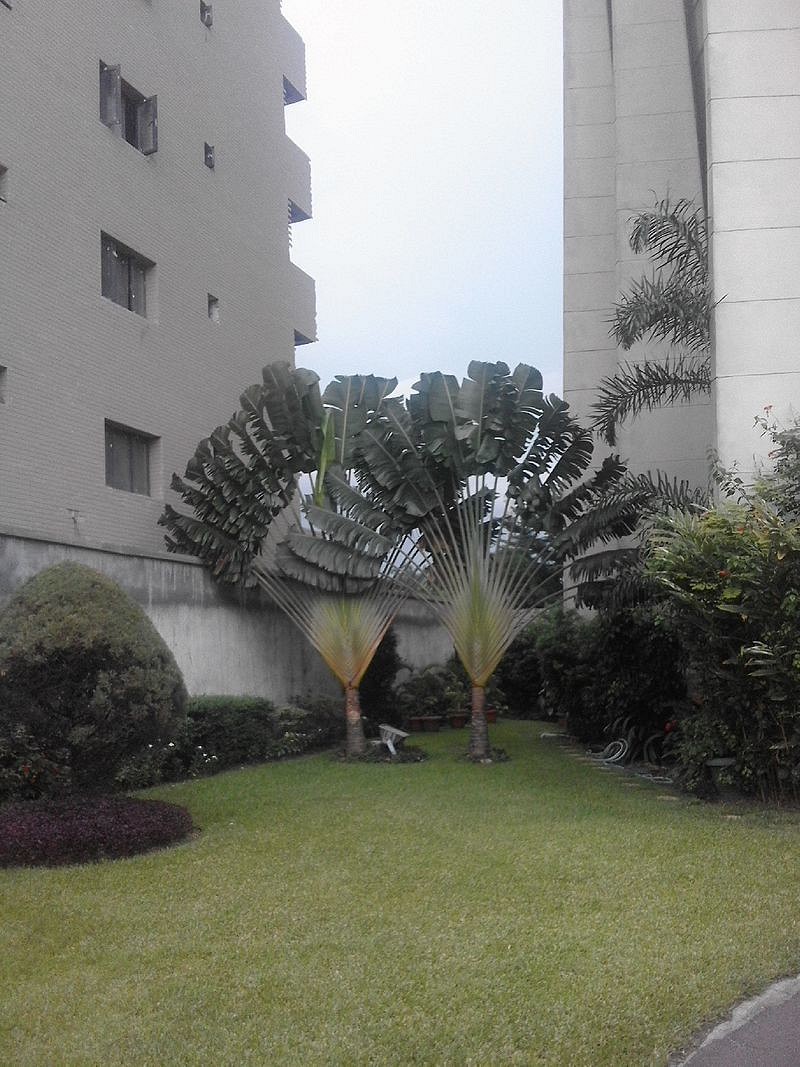 They flower rather like the strelizia.
They flower rather like the strelizia.
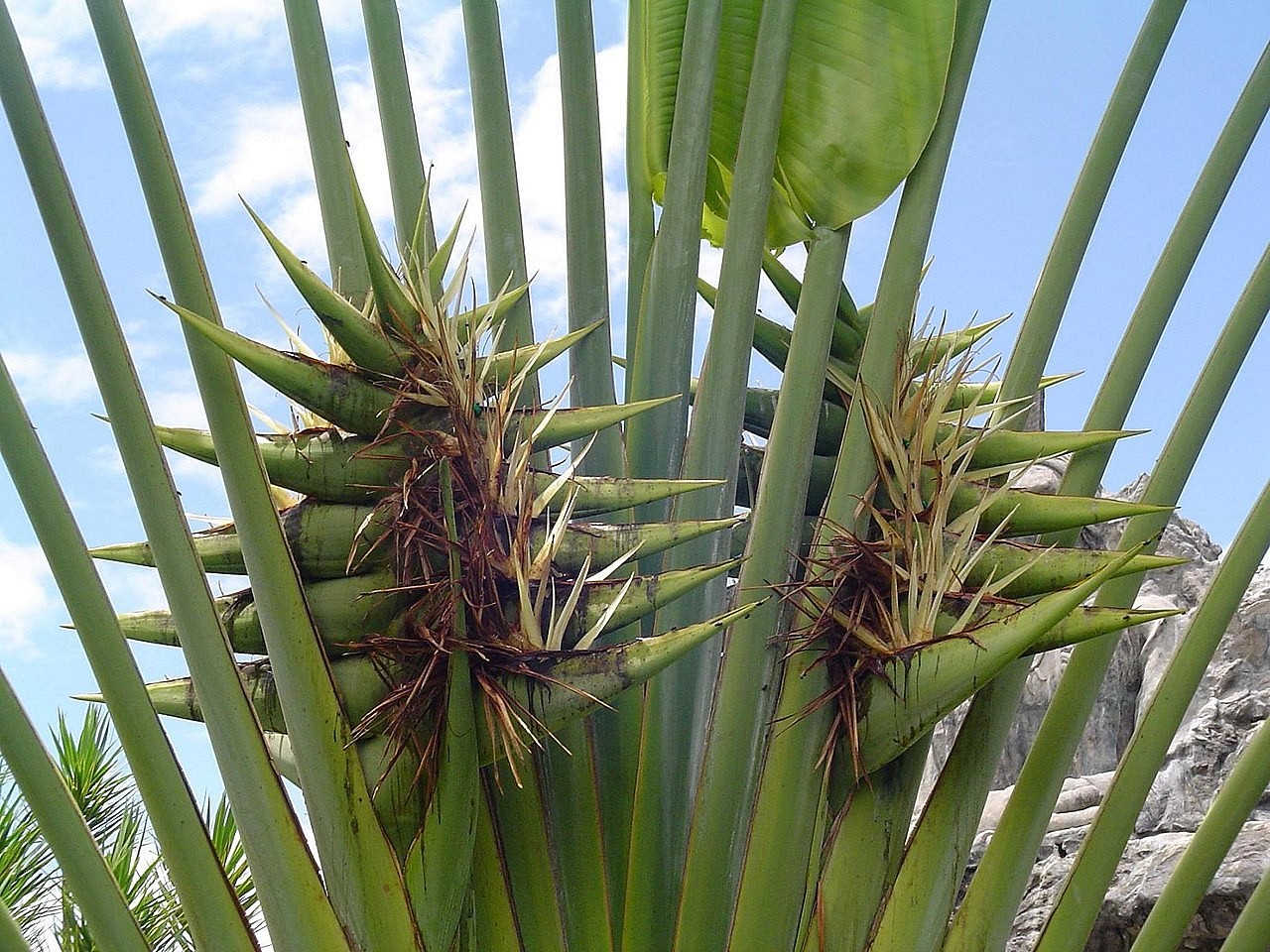 And have marvellous bright BLUE seeds!
And have marvellous bright BLUE seeds!
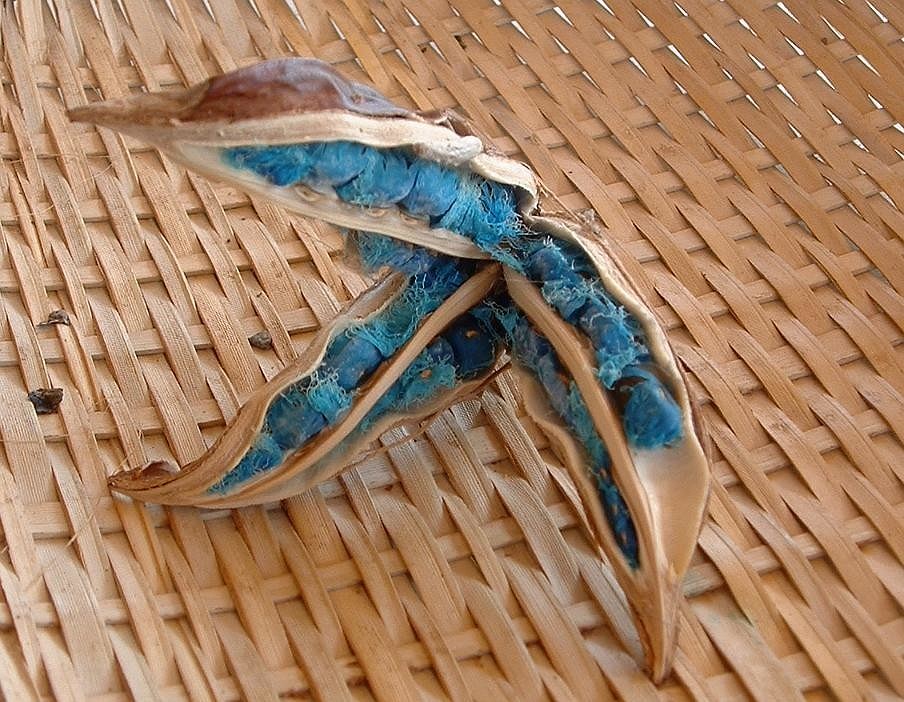
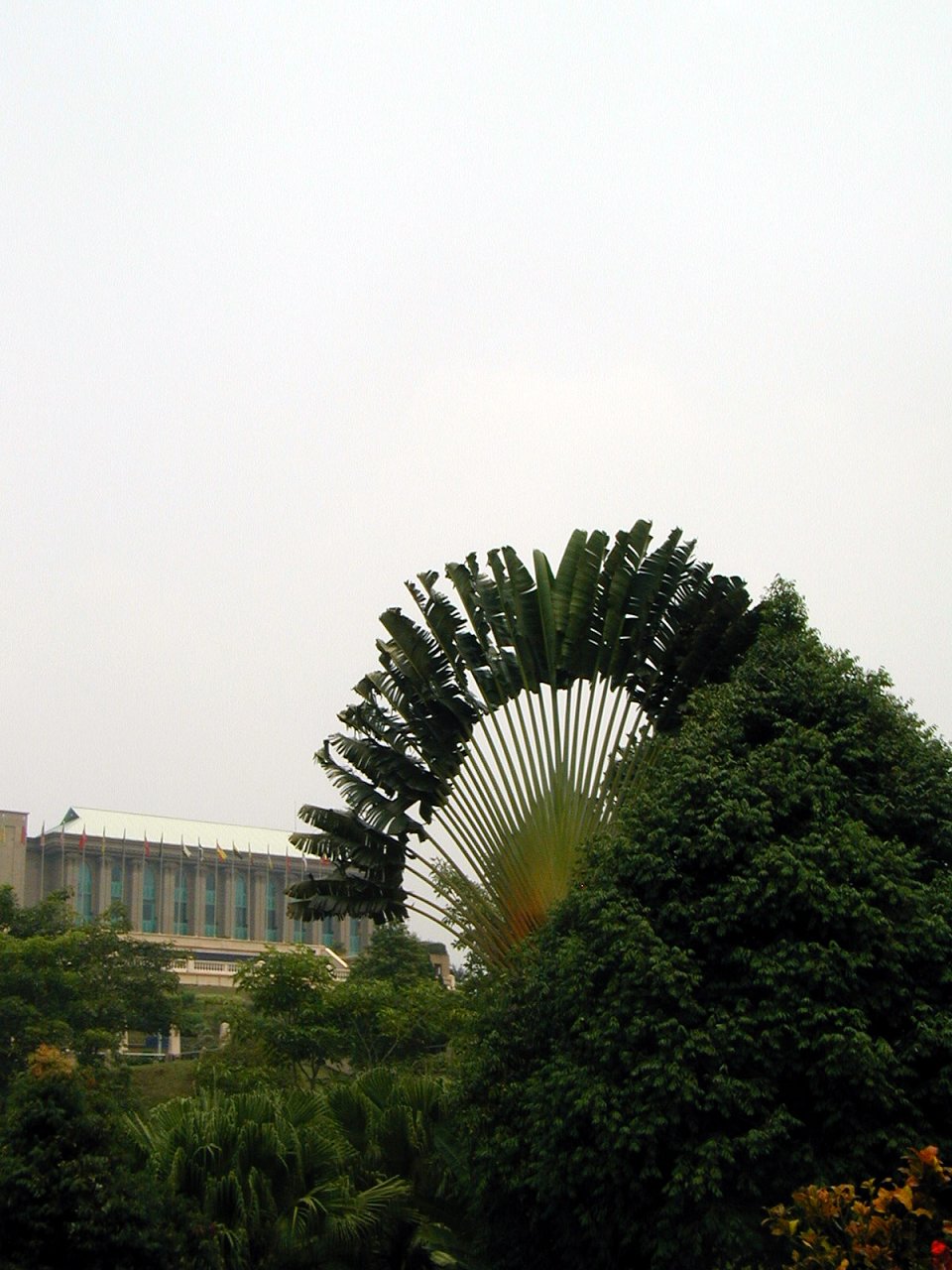
![20230203_172538[8095]](/resize.php/uploads/85782/63dcab10abdd5.jpg?w=1280&h=1280&fit=max&sharp=5&s=da53b6d982319bd1ad8196a31ff11055)
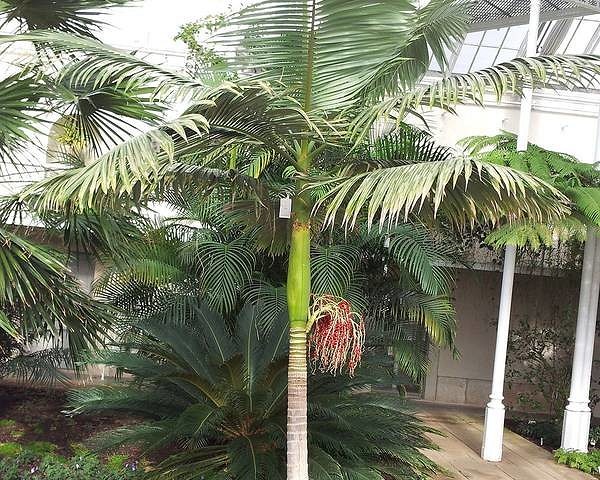
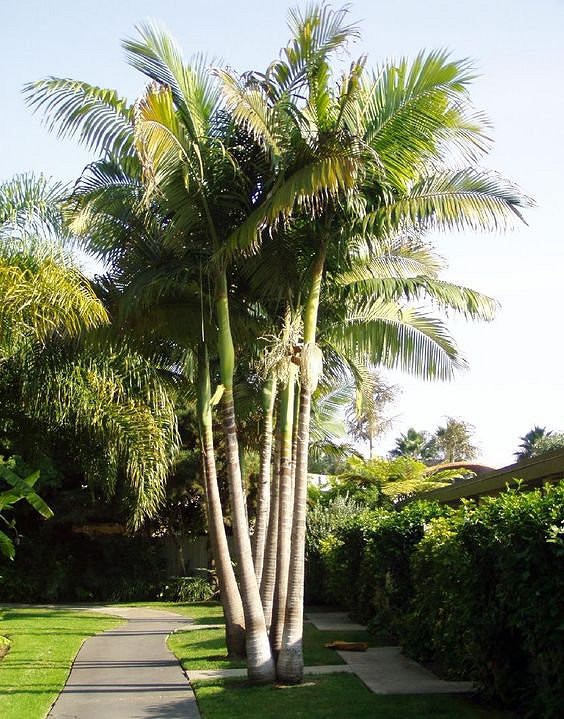
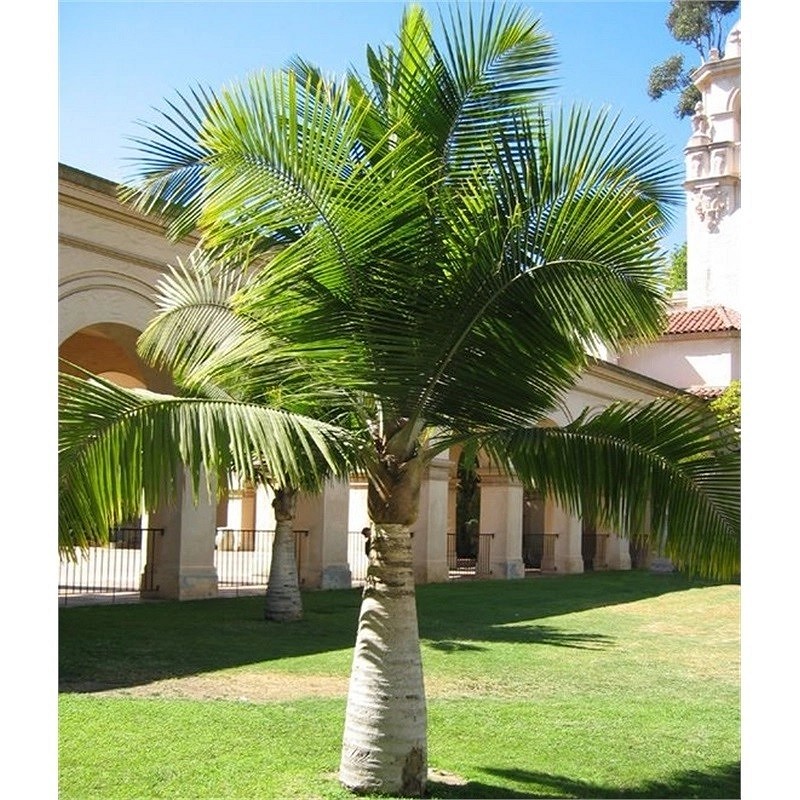

![20230207_153720[8186]](/resize.php/uploads/85782/63e1deffad173.jpg?w=1280&h=1280&fit=max&sharp=5&s=d00b120f666c9041df656bd6e93d85da)
